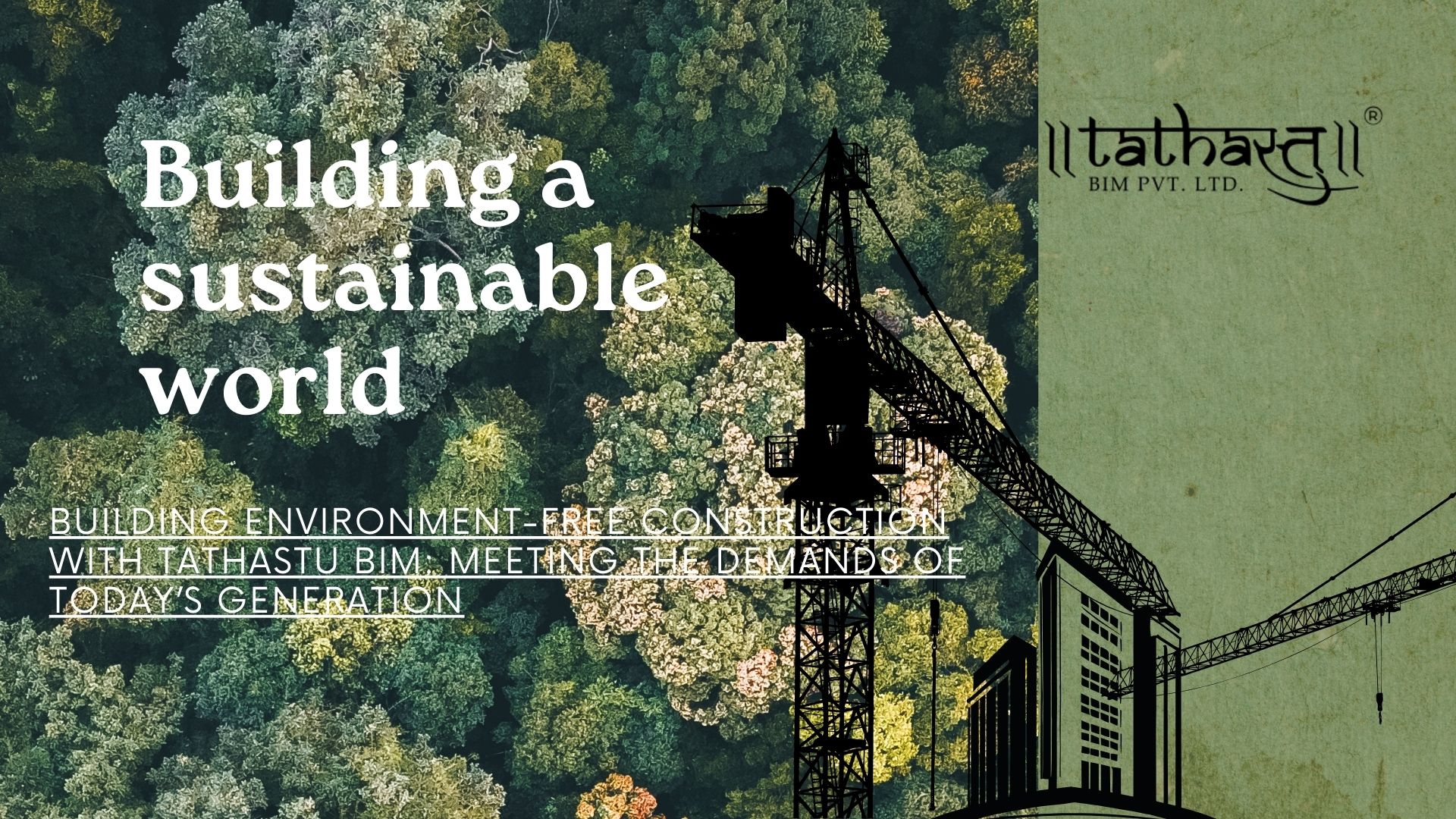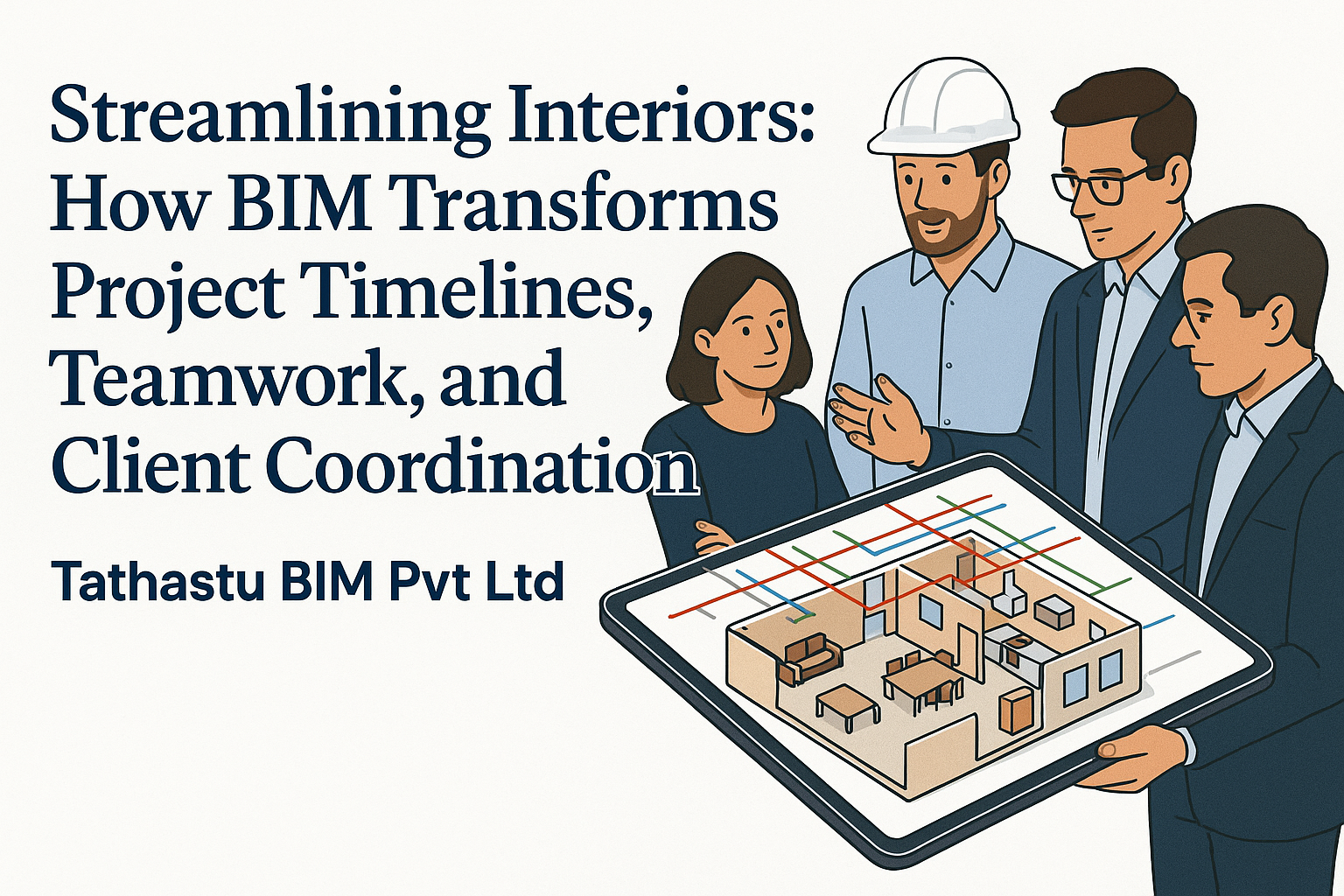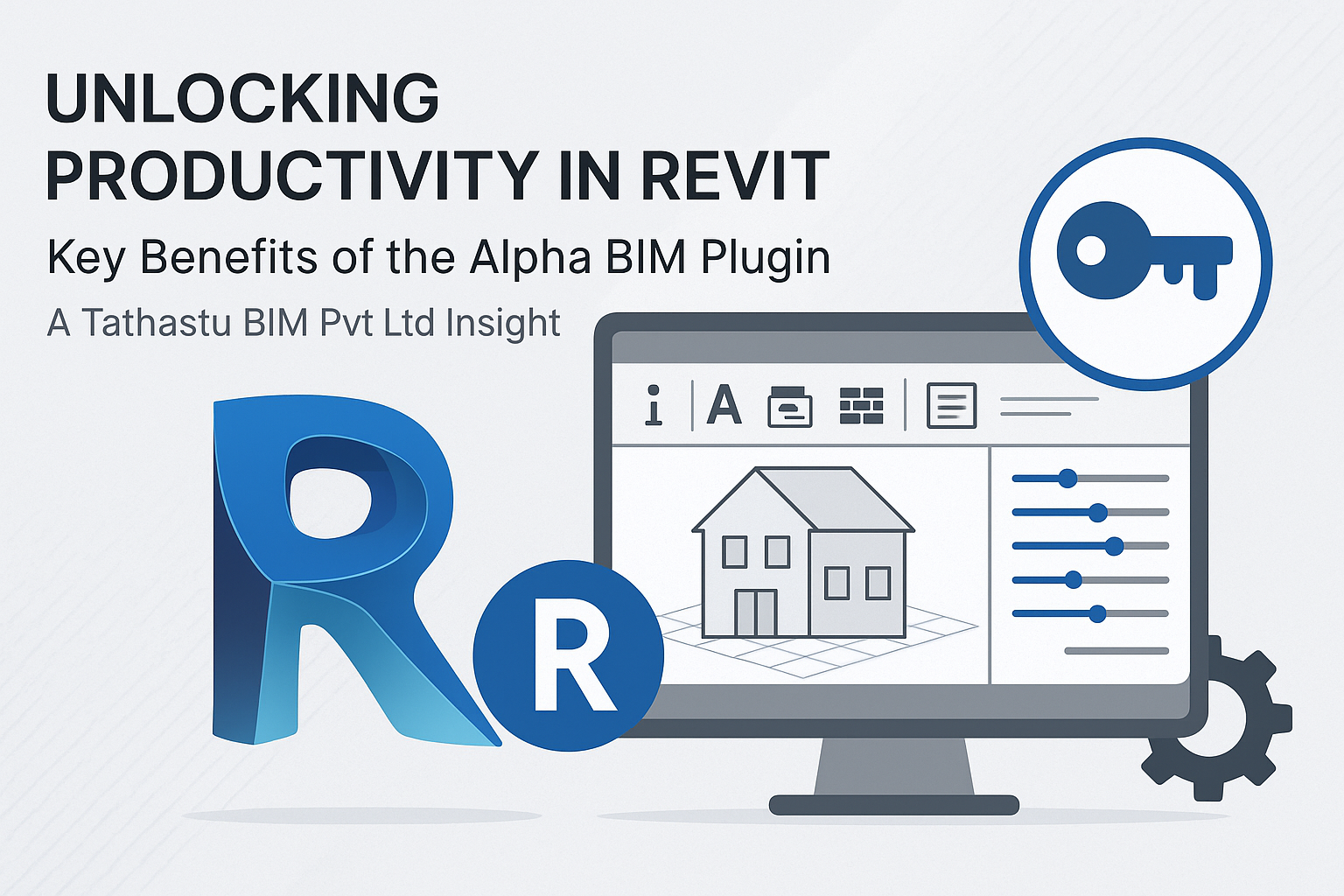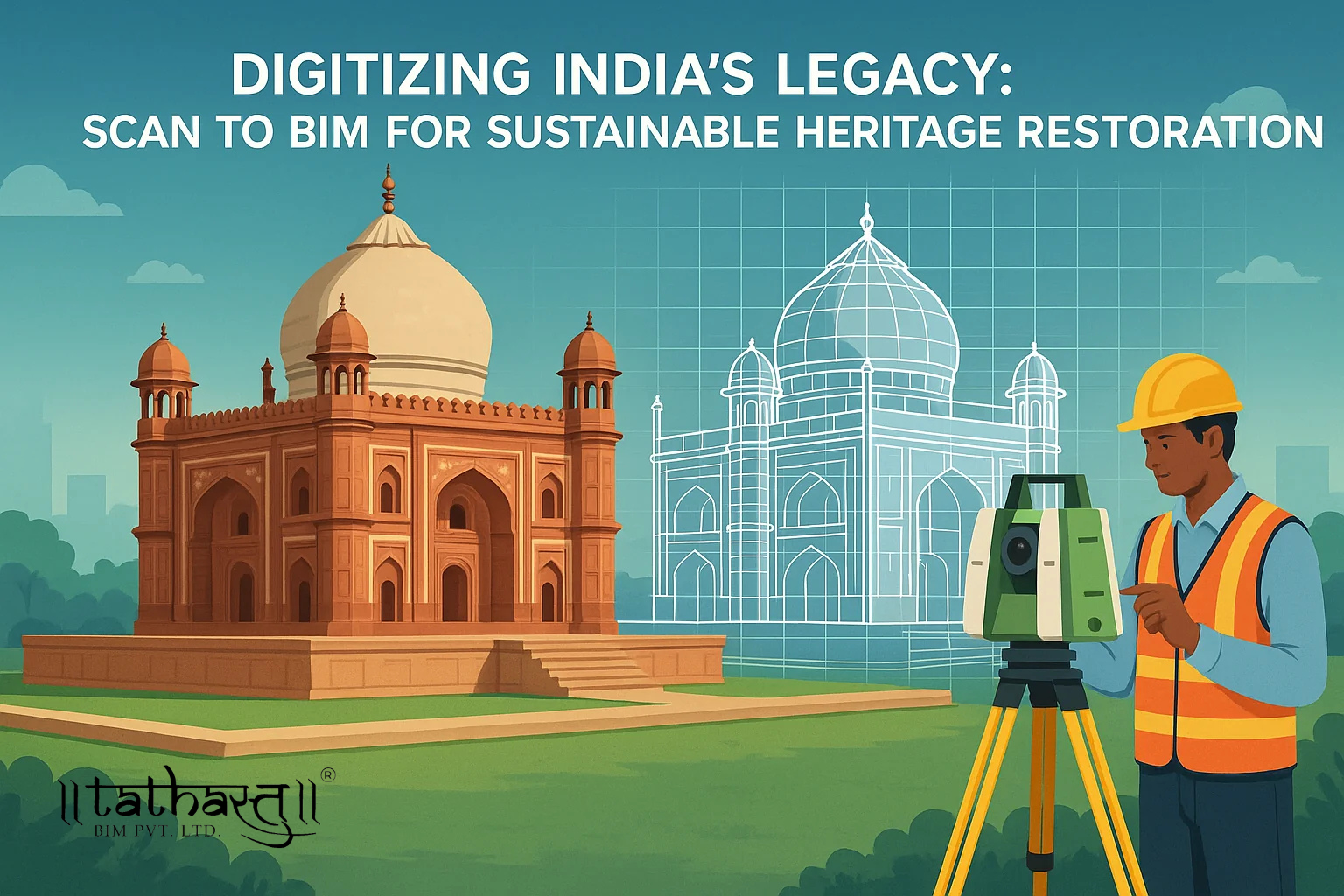


Building Environment-Free Construction with Tathastu BIM: Meeting the Demands of Today’s Generation
As the world grapples with the urgency of environmental sustainability, the construction industry must evolve to meet the demands of today's generation. Young people and communities are increasingly focused on the need for buildings that are not only energy-efficient but also environmentally friendly, socially responsible, and economically sustainable. To meet these demands, innovative technologies like Building Information Modeling (BIM) have emerged as powerful tools that can drive change across the construction sector.
Among the many BIM solutions available today, Tathastu BIM is paving the way for sustainable construction practices. Tathastu BIM is a unique approach that integrates cutting-edge technology with a strong focus on environmental sustainability. It empowers architects, engineers, and construction professionals to create environment-free buildings, a concept that goes beyond energy efficiency to ensure minimal environmental impact during every phase of a project.
So, how can we build environment-free construction using Tathastu BIM, and how does it meet the expectations of today's generation? Let's explore how this innovative solution aligns with the urgent need for sustainable building practices.
1. Designing for Sustainability with Tathastu BIM
The foundation of any environmentally friendly building lies in its design. Tathastu BIM empowers designers and architects to create structures that prioritize sustainability and minimize their environmental footprint from day one.
Energy-Optimized Designs: Using Tathastu BIM, designers can simulate the building's energy performance early in the design process. This includes optimizing heating, cooling, and lighting systems to reduce energy consumption. With detailed energy modeling, you can assess how the building will perform under different conditions and make adjustments to reduce reliance on non-renewable energy sources.
Sustainable Material Selection: With Tathastu BIM, selecting sustainable materials becomes easier. The platform allows users to analyze materials' environmental impact, carbon footprints, and longevity. You can choose materials that are locally sourced, energy-efficient, and have a low embodied carbon, which helps reduce both the upfront and operational environmental costs of the building.
Passive Design Features: Tathastu BIM helps integrate passive design principles such as solar orientation, natural ventilation, and daylighting into the building's layout. By simulating how light and air move through the structure, the design can leverage natural elements to reduce the need for artificial lighting, air conditioning, and heating, which significantly reduces the building's environmental impact.
2. Circular Economy in Construction: Waste Reduction and Reuse
One of the most significant challenges in the construction industry is waste. With Tathastu BIM, waste reduction and resource efficiency can be taken to new heights, aligning with the principles of the circular economy.
Precise Material Management: Tathastu BIM's advanced tools enable accurate material quantification, helping construction teams order just the right amount of materials. This reduces over-ordering, excess stock, and ultimately, waste. By ensuring that every material used is necessary, the project reduces its overall waste footprint, making the construction process more sustainable.
Recycling and Reuse: Tathastu BIM supports a recycling-first approach, making it easier to design buildings for disassembly and material reuse. Through its detailed building model, it is possible to track and manage materials so they can be recycled or repurposed at the end of their lifecycle. This approach reduces landfill waste and allows the building's components to be used in future projects, minimizing the need for new resources.
Modular Construction: With Tathastu BIM, modular and prefabricated construction becomes more accessible. By designing components off-site in a controlled environment, waste is minimized, and construction efficiency is increased. This method reduces on-site disruption, energy consumption, and the environmental impact typically associated with traditional construction.
3. Optimizing Construction Efficiency for Minimal Environmental Impact
While the design phase is crucial for sustainability, the construction process itself also plays a significant role in reducing environmental impact. Tathastu BIM streamlines construction processes to minimize waste, resource consumption, and carbon emissions.
Efficient Scheduling: Tathastu BIM incorporates 4D scheduling, which helps coordinate the construction timeline with maximum efficiency. By accurately mapping out the construction phases, this technology ensures that materials arrive when needed, labor is optimized, and equipment is used effectively. The result is a more sustainable process that minimizes delays, prevents resource wastage, and reduces the carbon footprint of the construction site.
Energy-Efficient Equipment and Techniques: Tathastu BIM can help optimize the use of energy-efficient equipment and construction methods. By simulating different construction methods, the team can select the most sustainable approach, whether it's using electric-powered machinery, reducing noise pollution, or adopting energy-saving techniques on-site.
Real-Time Monitoring and Waste Tracking: Tathastu BIM enables real-time tracking of waste generation during construction. This visibility allows the team to take immediate corrective actions, reducing the amount of construction waste generated and ensuring that any waste produced is properly sorted for recycling.
4. Smart Building Operation: Sustainability Beyond Construction
Once a building is constructed, its environmental impact continues. With Tathastu BIM, long-term operational sustainability is integrated into the building's management, ensuring that it remains energy-efficient and eco-friendly throughout its life cycle.
Energy Monitoring and Optimization: Tathastu BIM can integrate with smart building systems to monitor energy use in real time. Building management systems (BMS) help optimize energy consumption by adjusting heating, lighting, and cooling based on occupancy and weather conditions. This ensures that the building operates efficiently, using the least amount of energy possible.
Water Conservation Systems: In addition to energy monitoring, Tathastu BIM supports the integration of water-saving technologies such as rainwater harvesting, greywater recycling, and low-flow plumbing fixtures. These features help minimize water wastage, conserve local water resources, and reduce the building's overall environmental impact.
Lifecycle Maintenance: The digital twin capabilities of Tathastu BIM allow for long-term monitoring and maintenance of the building's systems. Facility managers can track the performance of HVAC systems, lighting, and other building elements to ensure they are operating efficiently throughout the building's life. Proactive maintenance minimizes downtime, energy consumption, and resource waste.
5. Green Certifications and Compliance
With sustainability becoming a key concern, achieving green certifications such as LEED, BREEAM, and WELL is an important goal for any construction project. Tathastu BIM simplifies the process of meeting these certification requirements by streamlining data collection, simulations, and documentation.
Documenting Sustainability Performance: Tathastu BIM helps demonstrate compliance with green building standards by generating the necessary data and documentation required for certification. By providing accurate performance metrics and supporting environmental assessments, BIM enables the project team to meet sustainability goals and achieve the desired certification.
Meeting Carbon Neutrality Targets: Tathastu BIM assists in modeling carbon emissions and making adjustments to ensure that the building achieves carbon neutrality. Whether through renewable energy integration, optimized energy use, or carbon-offset strategies, BIM ensures that the building's environmental impact is minimized.
6. Collaboration and Transparency: Meeting the Expectations of Today's Generation
Today's generation demands transparency, ethical practices, and collaboration when it comes to construction projects. Tathastu BIM enables seamless collaboration among all stakeholders, including architects, engineers, contractors, and sustainability consultants. This ensures that sustainability is prioritized at every step of the design and construction process.
Enhanced Stakeholder Communication: Tathastu BIM provides a collaborative platform where all project stakeholders can work together, share ideas, and make informed decisions. This shared vision for sustainability ensures that the project meets the highest environmental standards while delivering value to the community.
Transparency in Environmental Impact: Through detailed simulations and data analysis, Tathastu BIM offers transparency in terms of a building's environmental impact. Stakeholders can access performance data and make adjustments as needed, ensuring that the building remains on track to meet sustainability goals.
Conclusion: Shaping a Sustainable Future with Tathastu BIM
As we move toward a future where sustainability is no longer optional but a necessity, Tathastu BIM stands at the forefront of creating environment-free buildings. By embracing this innovative technology, the construction industry can build structures that not only meet the needs of today's eco-conscious generation but also contribute to a healthier, more sustainable planet. From sustainable design and resource efficiency to long-term energy management, Tathastu BIM enables construction teams to create buildings that have a minimal environmental impact throughout their entire lifecycle.
With Tathastu BIM, the construction industry is well-equipped to meet the demands of today's generation and build a future where sustainability is at the heart of every project.
Popular Posts





